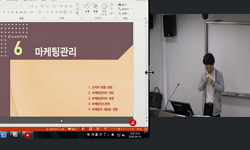The major Johannine scholars take John 21 as the addition to John 1-20 as a appendix or a secondary epilogue. Under the rubric of historical criticism and narrative criticism, the role of John 21 is explored with the literary relationship as it relate...
http://chineseinput.net/에서 pinyin(병음)방식으로 중국어를 변환할 수 있습니다.
변환된 중국어를 복사하여 사용하시면 됩니다.
- 中文 을 입력하시려면 zhongwen을 입력하시고 space를누르시면됩니다.
- 北京 을 입력하시려면 beijing을 입력하시고 space를 누르시면 됩니다.
https://www.riss.kr/link?id=A100859588
- 저자
- 발행기관
- 학술지명
- 권호사항
-
발행연도
2013
-
작성언어
Korean
-
주제어
요한복음 ; 1-20장과 21장 ; 내러티브 비평 ; 불연속성 ; 연속성 ; 내러티브 상호작용 ; The Gospel of John ; 1-20 & ; 21 ; Narrative Criticism ; Discontinuity ; Continuity ; Narrative Interplay
-
등재정보
KCI등재
-
자료형태
학술저널
- 발행기관 URL
-
수록면
65-89(25쪽)
- 제공처
-
0
상세조회 -
0
다운로드
부가정보
다국어 초록 (Multilingual Abstract)
The major Johannine scholars take John 21 as the addition to John 1-20 as a appendix or a secondary epilogue. Under the rubric of historical criticism and narrative criticism, the role of John 21 is explored with the literary relationship as it relates to John 1-20. The output of such narrative relationship is considered as the dichotomy of the continuity(thesis) and discontinuity(antithesis) between John 1-20 and 21. The article suggests the possibility that the literary relationship between John 1-20 and 21 is marked neither by discontinuity nor mere continuity(or completion) but a dialectical narrative interplay in which clear distinctive interaction is combined and connected(synthesis). The original implied author wanted to end the Johannine story of Jesus at 20:30-31(discontinuity), but the another implied author wanted to continue the story of Johannine disciples in John 21(continuity beyond discontinuity). Thus, behind John 1-20 and John 21 lurks two implied authors communicating different points of view by the dialectical narrative interplay. By this process, the implied author of John 21 intended to write new perspectives and messages for a newly changed Christian community. The gospel of John stands in its final form; John 21 is not a simple appendix or epilogue, but a necessary ending of the gospel along with a literary unity and integrity through the narrative interplay.
동일학술지(권/호) 다른 논문
-
빌립보서의 통일성과 투옥 장소 문제 해결의 “탈현대적” 해석 패러다임
- 한국기독교학회
- 김덕기(Duk Ki Kim)
- 2013
- KCI등재
-
한국 성서학의 공간적 전환을 위한 “장소” 이론의 가능성과 한계
- 한국기독교학회
- 안용성(Yong Sung Ahn)
- 2013
- KCI등재
-
- 한국기독교학회
- 이선호(Sun Ho Lee)
- 2013
- KCI등재
-
- 한국기독교학회
- 양신혜(Shin Hye Yang)
- 2013
- KCI등재





 DBpia
DBpia






